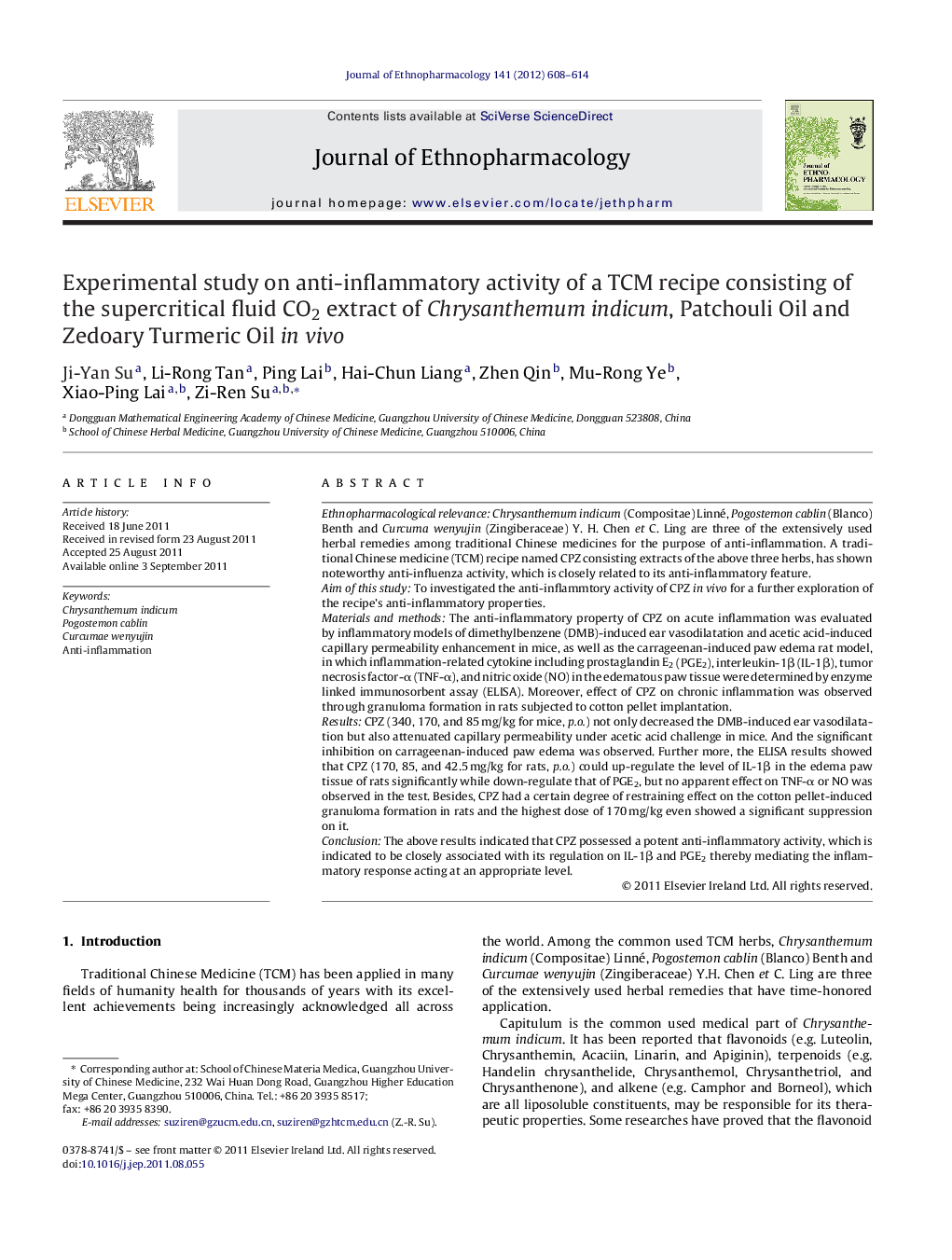| Article ID | Journal | Published Year | Pages | File Type |
|---|---|---|---|---|
| 2545595 | Journal of Ethnopharmacology | 2012 | 7 Pages |
Ethnopharmacological relevanceChrysanthemum indicum (Compositae) Linné, Pogostemon cablin (Blanco) Benth and Curcuma wenyujin (Zingiberaceae) Y. H. Chen et C. Ling are three of the extensively used herbal remedies among traditional Chinese medicines for the purpose of anti-inflammation. A traditional Chinese medicine (TCM) recipe named CPZ consisting extracts of the above three herbs, has shown noteworthy anti-influenza activity, which is closely related to its anti-inflammatory feature.Aim of this studyTo investigated the anti-inflammtory activity of CPZ in vivo for a further exploration of the recipe's anti-inflammatory properties.Materials and methodsThe anti-inflammatory property of CPZ on acute inflammation was evaluated by inflammatory models of dimethylbenzene (DMB)-induced ear vasodilatation and acetic acid-induced capillary permeability enhancement in mice, as well as the carrageenan-induced paw edema rat model, in which inflammation-related cytokine including prostaglandin E2 (PGE2), interleukin-1β (IL-1β), tumor necrosis factor-α (TNF-α), and nitric oxide (NO) in the edematous paw tissue were determined by enzyme linked immunosorbent assay (ELISA). Moreover, effect of CPZ on chronic inflammation was observed through granuloma formation in rats subjected to cotton pellet implantation.ResultsCPZ (340, 170, and 85 mg/kg for mice, p.o.) not only decreased the DMB-induced ear vasodilatation but also attenuated capillary permeability under acetic acid challenge in mice. And the significant inhibition on carrageenan-induced paw edema was observed. Further more, the ELISA results showed that CPZ (170, 85, and 42.5 mg/kg for rats, p.o.) could up-regulate the level of IL-1β in the edema paw tissue of rats significantly while down-regulate that of PGE2, but no apparent effect on TNF-α or NO was observed in the test. Besides, CPZ had a certain degree of restraining effect on the cotton pellet-induced granuloma formation in rats and the highest dose of 170 mg/kg even showed a significant suppression on it.ConclusionThe above results indicated that CPZ possessed a potent anti-inflammatory activity, which is indicated to be closely associated with its regulation on IL-1β and PGE2 thereby mediating the inflammatory response acting at an appropriate level.
Graphical abstractFigure optionsDownload full-size imageDownload high-quality image (154 K)Download as PowerPoint slide
